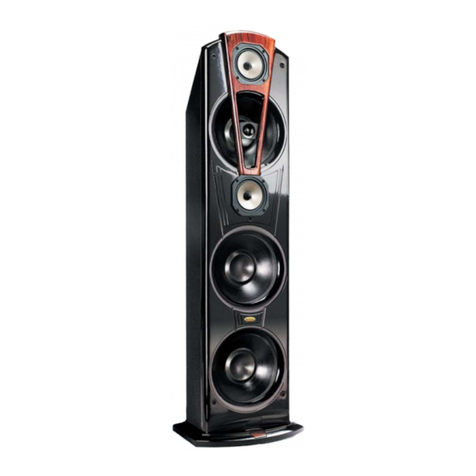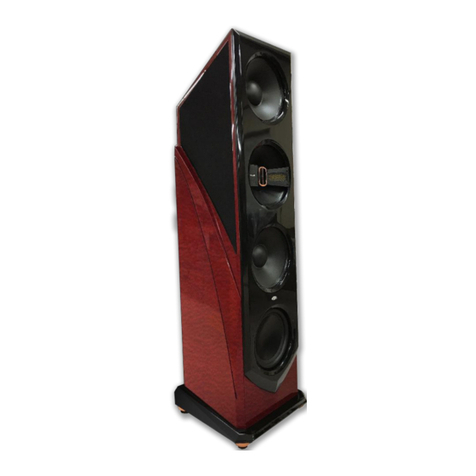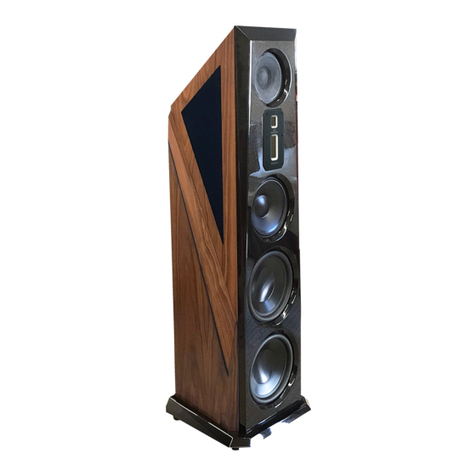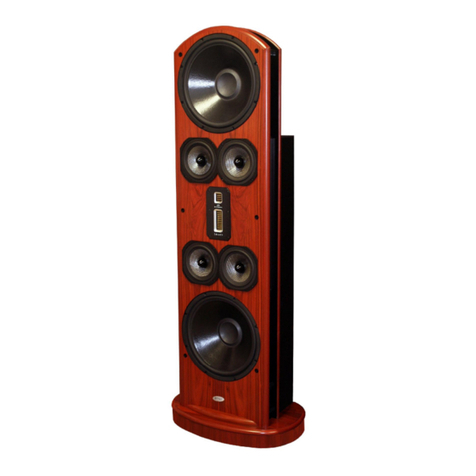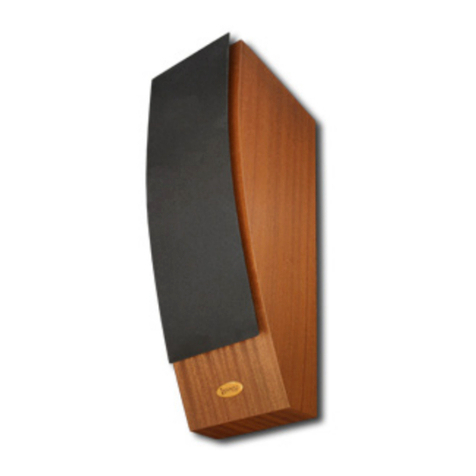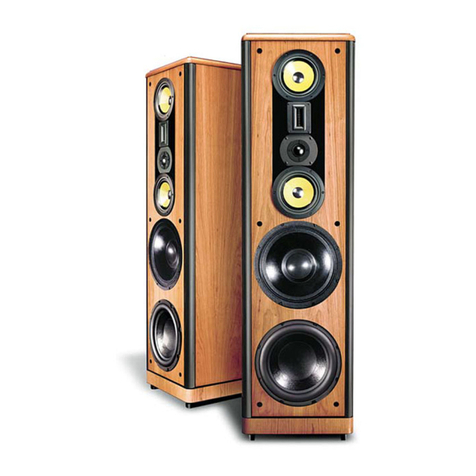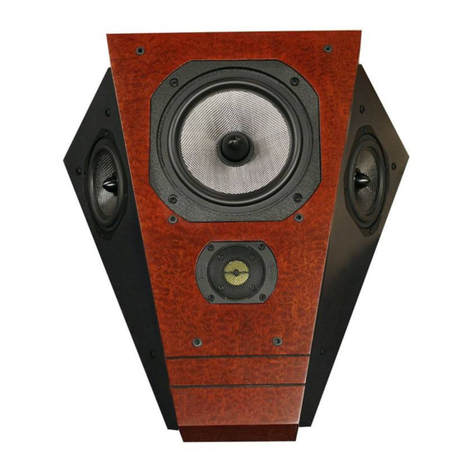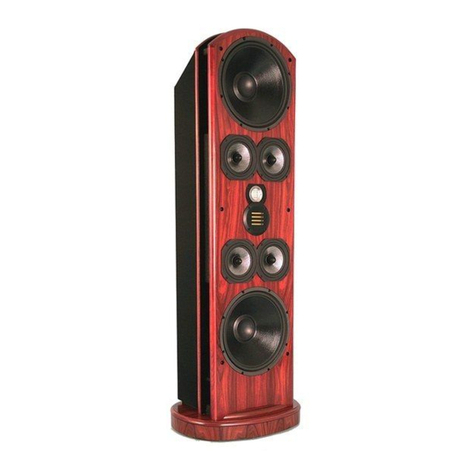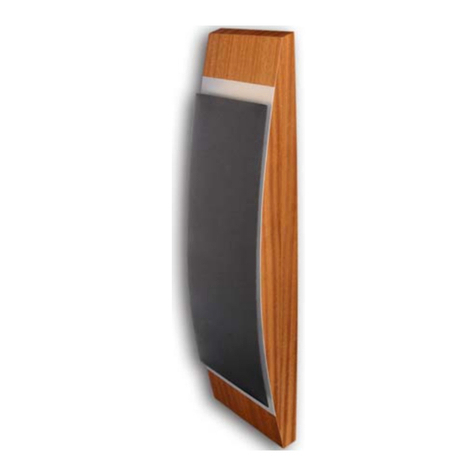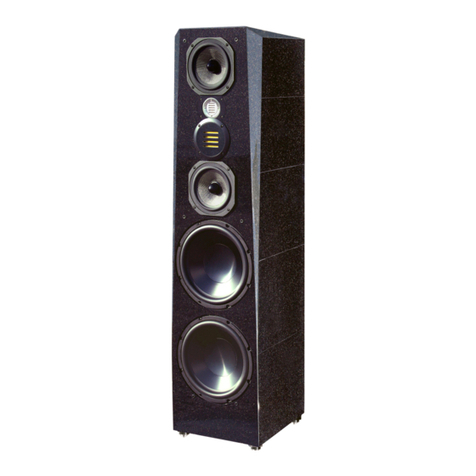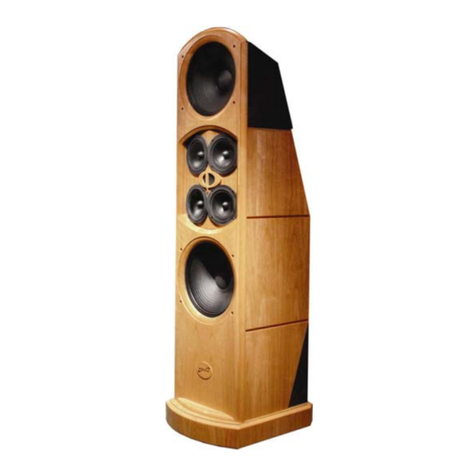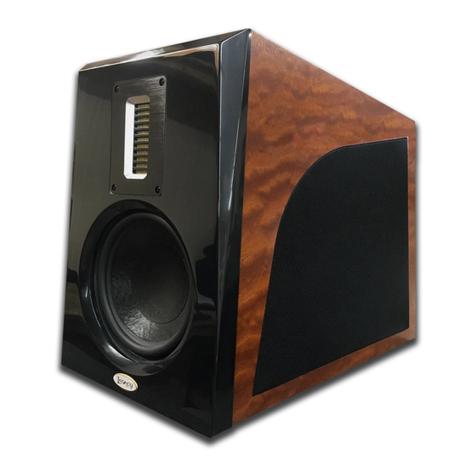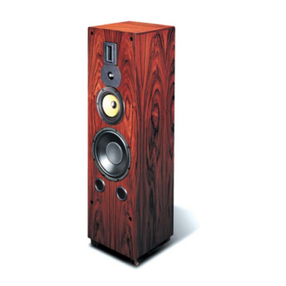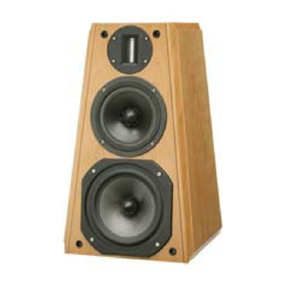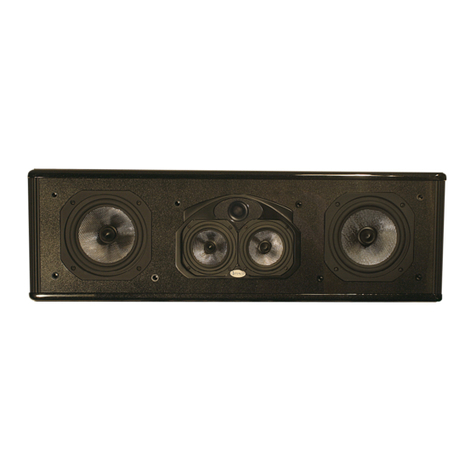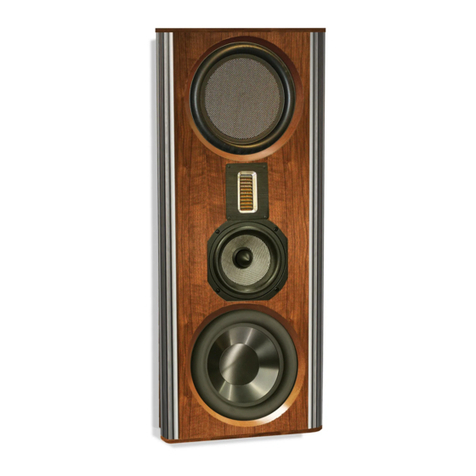Unpacking
Your new speaker system has been very carefully packaged to
insure that it travels to you safely. Each speaker is protected by a
double-wall outer carton with heavy V-board corner protectors.
Molded foam end caps are used to protect the elegant cabinetry,
and a plastic liner is provided as waterproofing.
Please save this packing for future transportation. If cartons
become damaged or misplaced, new ones can be purchased from
Legacy Audio.
The first unpacking step is to fold back the flaps at the top of
the outer carton.Then carefully stand the loudspeaker on its head
and slip away the outer cardboard. Be careful not to push in on
the speaker components located on the front and rear of the
cabinet. Remove cornerboard, foam caps and outer plastic.
Speaker Placement
To allow more flexibility in seating arrangements, your Legacy
loudspeaker is designed for broad lateral coverage. Optimal
listener position is actually about 5 to 15 degrees off the axis
normal to the loudspeaker baffle.
Assuming a listener distance of about ten feet, begin by
placing the speakers approximately 7 feet apart and about 1 - 3
feet from the wall behind them. In most rooms this will afford a
speaker position at least 2 feet or more from the side walls. The
amount of recommended "toe-in" is a function of the listening
angle. As the overall listening angle increases from 40 degrees,
the amount of toe-in should increase.
Your Legacy speaker is optimized for a flat response in the far
field. Best results are obtained vertically with the listener's ear at
tweeter level with the loudspeakers gently toed in toward the
listener. Increasing the degree of toe-in is recommended when
placement next to sidewalls is required.
Placing the loudspeaker or the listener near a room boundary
will generally increase low frequency impact. If you are forced to
position one or both of your loudspeakers in a corner, be
prepared to reduce bass output via the control switches on the
rear terminal plate of each loudspeaker. You may also wish to
reduce low frequency output with your preamp's bass tone
control. If you do not have tone controls on your preamp, we
can provide you with an external custom passive attenuator
which can also be tuned for treating standing wave ("room
boom") problems.
2
